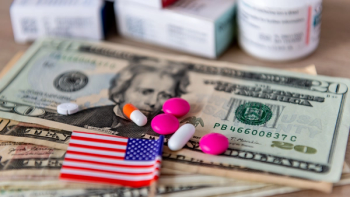
IP Climate Change: Patent Rights Face Headwinds
The pharmaceutical industry as of late has faced a growing movement against patent protection in favor of providing access to low cost medicines, specifically in developing countries.
The pharmaceutical industry as of late has faced a growing movement against patent protection in favor of providing access to low cost medicines, specifically in developing countries.
In Indonesia, the government imposed compulsory licensing on seven drugs used to treat HIV and Hepatitis B in September. In July, China passed a law which grants it power to impose compulsory licensing on any medicine with little if any warrant. Most recently India, a country becoming increasingly notorious for its revocation of patent rights on public health grounds, struck down Roche’s patent for its Hep C drug Pegasys.
Enter Médecins Sans Frontières (MSF), which recently launched the Patent Opposition Database, an easily accessible online archive that contains legal documents of current and past litigation, as well as important information on how to appropriately build an opposition against patents protected by industry claims of marketing exclusivity, which are seen as denying affordable access to medicines.
The database aims to bring together patient and civil society groups, guiding them through the process of challenging and overturning patents that do not fulfill the standard TRIPS agreement requirements such as novelty, inventiveness and industrial application. The expectation is that the information will accelerate the formation of working alliances between national activist organizations in order to share specialist knowledge. So far, the database has built evidence for 45 patent oppositions in key emerging countries such as Brazil, India, Thailand, and others, like Spain.
Leena Menghaney, MSF’s Access Campaign India Coordinator, cites as rationale big pharma’s current efforts to curtail patent opposition and compulsory licensing agreements, noting that “Drugmakers have acquired many generic companies, making it harder to challenge patent infringements.” A recent example is Mylan’s acquisition of India’s SMS Pharma for $33 Million.
“With newer medicines hitting the market, it has become much tougher for generic companies to come up with affordable versions,” she adds. Certainly, litigation against patents is a lengthy procedure, where it must be proven that the drug patents being opposed do not demonstrate a noteworthy increase in efficacy, and more generally do not provide any significant innovation to the therapeutic area under local law. Industry is also getting more aggressive: Pfizer has said it will appeal a recent ruling in India in favor of Cipla’s case against Sutent, a drug used to combat kidney cancer.
The data race is affecting both sides of the issue. The World Intellectual Property Organization, or WIPO, set up its own database with industry support-Pfizer was a leading sponsor-just a year ago to share important IP information regarding the development of diagnostics, vaccines and medicines for neglected tropical diseases, malaria and tuberculosis. The initiative, known as Re:Search, boasts a growing membership of 61 countries and ten ongoing research collaborations.
The context of these events begs a litany of questions about the change occurring within the world of drug IP: is the industry strategy facing an impasse with new ideas in short supply? Does the current momentum behind groups like MSF suggest a new reality of constant challenge and overturn of patents in developing countries? And finally, what about the patient interest? Who speaks for them?
Newsletter
Lead with insight with the Pharmaceutical Executive newsletter, featuring strategic analysis, leadership trends, and market intelligence for biopharma decision-makers.





